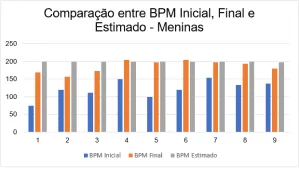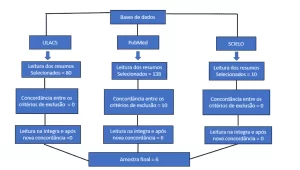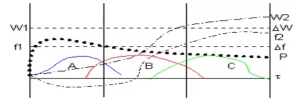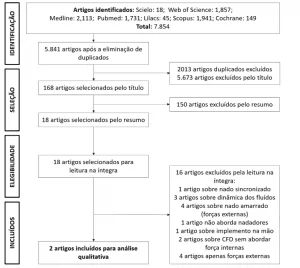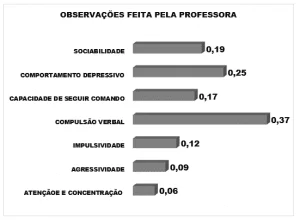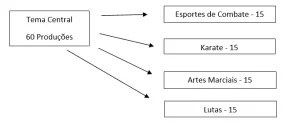REVIEW ARTICLE
GAMA, Uberto Afonso Albuquerque da [1]
GAMA, Uberto Afonso Albuquerque da. Historical synthesis of Korean Hapkido and its contributions. Revista Científica Multidisciplinar Núcleo do Conhecimento. Year. 06, Ed. 09, Vol. 06, p. 153-167. September 2021. ISSN: 2448-0959, Access link: https://www.nucleodoconhecimento.com.br/education-physics-en/korean-hapkido, DOI: 10.32749/nucleodoconhecimento.com.br/education-physics-en/korean-hapkido
ABSTRACT
The theoretical support assumptions of Hapkido are closely linked to the influences of neighboring Eastern peoples, especially India and China. The general objective of this article is to present a brief history of this Korean martial art and its founders. The specific objectives are to emphasize the importance of martial techniques in contemporary times and their contribution to the development of human potential. The methodology applied was through a systematic review of authors on the subject in Brazil, Korea and the United States. The results showed that the oppressions that the Korean people suffered throughout their history were the main reasons why this martial art was structured in a well-organized and complete way. Hapkido has proven its relevance in the growth of great nations, in the training of trainers and in the preparation of fighters and combatants in the Armed Forces by promoting and developing discipline, order and social interaction. It is concluded, therefore, that a technical-scientific evaluation is necessary, linking this martial art directly to philosophy, psychology, physical education and sports medicine, with practical applications for society and for specialized communities on all continents, especially for professionals. of Physical Education who will be able to use this set of techniques as a training model for their students.
Keywords: Hapkido, Martial Training, Discipline, Self-esteem, Transformation.
1. INTRODUCTION
The more educated and educated and the more cultured and prepared a people, the better their personal and citizenship formation will be. There are many examples of developed and rich countries that grew through education and expanded their progress in a short time. We all know that the positive transformation of a nation takes place through the education of its people.
It is a fact that the family, the school, society and the government must work together offering solutions and implementing effective actions that result in this. Thus, it is necessary to rescue the development of the psychic, motor, intellectual, emotional and spiritual abilities of each individual, developing self-confidence and awareness of order, discipline, generosity, strength, courage, honor and humility – important factors for the progress of a nation ( SHEYA, 2000).
In this way, it can be observed that the teaching of the Korean martial art Hapkido[2] has proved to be quite effective in transmitting a cooperative spirit, awareness of corporeality and motricity, with ethical principles and companionship with the goal of achieving full citizenship. (LIM, 2017).
The word Hapkido means “harmonic path of energy”. It is an art that can be practiced by all people, of all age groups, from the youngest to the oldest individual (GAMA, 2019).
The theoretical support assumptions of the martial art called Hapkido are closely linked to the influences of neighboring Eastern peoples, especially India and China. However, little is known about these influences and how Hapkido can contribute to the development of human potential. In this context, the present article has the general objective of carrying out a brief history of this Korean martial art and its founders.
According to Amaral (2020), Hapkido has the know-how to develop the recovery process of children and young people who reveal social behavior disorders, both in family life and in the school unit, eliminating violence and hostility, and encouraging fraternization, social well-being and respect among all people.
2. HAPKIDO: AN ART OF STRENGTH AND DISCIPLINE
Originating in Korea, when the country was not yet divided, Hapkido has become one of the most complete martial arts. It is currently a military discipline taught in the Armed Forces almost all over the world because it involves in its practical training the formation of ethical, moral, philosophical, technical and psychophysical principles. (MILLER, 2016).
However, Hapkido is not an ancient martial art, as some claim. Hapkido is an art in a continuous process of evolution and is ready to positively transform all people (SHEYA, 2000). Hapkido is a modern art that was developed in the 20th century around the 1940s. It was influenced in its roots by the concepts of Daito-ryú Aikijujútsu, a traditional Japanese fight transmitted by the Japanese master Sôkáku Takêda and which, in turn, was deeply influenced by Darúma Taíshi, also known as Ta Mô or Boddhidharma[3] (KIM – KIM, 2005).
Nevertheless, everyone attributes the codification of Hapkido to Master Choi Yong-Sul. He was a student of sensei Takêda and only much later did he reorganize his techniques and strikes, expanding the possibilities of Hapkido (SHAW, 2011).
This transformed Hapkido into a new martial trend, an effect already observed by the intervention of other great teachers and masters with their own methodologies. His broad and precise view of the techniques showed that Hapkido would become one of the most complete in the world (PELLEGRINI, 2009).
2.1 A BRIEF SUMMARY OF HISTORY
According to Kimm (2005) in order to have a better understanding of the possible origins of Hapkido and how its development was, we must make a brief summary and go back analyzing the year 2333 BC. C., possible date from the archaeological and historical records of the emergence of Korea.
E assim, neste período, o povo daquela época encontrava-se insatisfeito com seu modo de vida e começava sua migração gradual para uma vasta região do lado leste da Ásia e que atualmente incluiu o extremo nordeste da China e que se denominava Manchúria. Este povo estabeleceu-se em uma região muito próspera hoje denominada como península coreana em busca de um melhor clima, terras férteis para agricultura, rios e praias para pesca e terras de montanhas para caça para sua sociedade e que formou três reinos controlados pela Rainha Chin Heung: Koguryô, Paekchê e Silla (CALDAS, 2011)
During a long period of migration and stabilization, tribal systems had established that young warriors must be trained in the practice of the fighting arts empty-handed to protect all members. Subsequently, they should be prepared and technically trained in the use of sticks, staffs, spears and other weapons. This was a very wild and rough time, where only the strongest and most capable survived. The wars between the Mongols and the Chinese were permanent (KIMM, 2005).
Over time, the development of archery was also of extreme relevance linked to horse riding. The first tribes used horses for hunting over long distances and for the defense of society. Gradually, in addition to archery, the use of spears, yon-bom[4], knives, daggers and other weapons[5] was included.
Later, the leaders who had greater skills, more technical capabilities, formed an elite group called Hwarang-dô. His followers or disciples called themselves Nang-dô (SHAW, 2011). The elite group followed strict rules of conduct and loyalty, both to the king and to friends and relatives, with bravery and boldness that guided their lives.
2.2 DISPUTE BETWEEN NATIONS
The historical understanding of this period is fundamental in this work, so that we can describe the context where Hapkido had its development and evolution in the role of martial arts.
Japan’s interest in Korea gradually increased and the possibility of occupation and colonization was already on the verge of happening. There were two wars won by Japan: the first from 1894 to 1895 between Japan and China; and the second from 1904 to 1905 between Japan and the Soviet Union. (KIMM, 2005).
After that, Japan increased its presence on the Korean peninsula with the intention of occupation. And that invasion finally took place in 1910, when there was the decline of the Korean Empire. This was due to internal disputes of command which weakened the Kingdoms of Korea.
Ocorreu então a assinatura do Tratado de Ganghwa ou também conhecido como “Tratado da Amizade Japão-Coréia”, celebrado entre o Império do Japão e o Reino Joseon em 1876. Neste momento da história, aconteceu um acordo de coalizão entre a Coréia e o Japão. Mais tarde é assinado outro acordo, o Tratado Eulsa, onde o Império Coreano ganhou proteção do Império Nipônico, dando ares de um Estado independente, mas que, na verdade, estava ficando subordinado à política externa e obrigações junto ao Império do Japão (LIM, 2017).
Korea is then occupied by hundreds of thousands of Japanese people, who transfer their residences to that country, losing their fertile properties, which are then taken by military force, initiating clashes and disputes between Japanese and Koreans (KIMM, 2005).
In 1930, Koreans were forced to migrate to Japan to perform forced labor. Many other acts against human rights were carried out. And only in 1945, at the end of World War II, the Soviet Union and the United States decided to intervene and divide Korea, with the North being under Soviet rule and the South under American rule. The demarcation would be the 38th parallel, a region demarcated by the Russians who were established in the area (SHAW, 2011).
According to Kimm (2005), during the Potsdam conference meeting, between July 17 and August 2, 1945, the Soviet Union and the United States committed to abandoning Korea, leaving two governments: in South Korea (Seoul), where Syngman Rhee, an American ally, was established, and in North Korea (Pyongyang), Kim-IL Sung, a Russian ally, was established.
The dictatorial characteristics were harshly imposed and remain to this day with the 38th parallel as the border. Both North and South Korean rulers wanted the unification and not the division of the country (GAMA, 2019).
Even though the Potsdam conference meeting was honored through the signing of the peace treaty, North Korean ruler Kim Il Sung tried to influence Josef Stalin, communist revolutionary and Soviet political leader, to invade South Korea and seize it. there the force. Stalin was apprehensive for a number of reasons, especially the fact that the conflict would lead to a violent confrontation with the United States.
According to Shaw (2011), even so, Josef Stalin agreed to support North Korea influenced by Kim Il Sung. Then, only in 1949, China had become a communist state, and so, Josef Stalin, in order to guarantee the support of the Union of Soviet Socialist Republics – USSR – over the Asian region, guaranteed and paid Kim IL Sung to invade South Korea. South on June 25, 1950, crossing the 38th parallel border. The military confrontation between the nations begins.
Faced with this scenario, the United Nations Security Council – UN – issued Resolution 83, on June 27, 1950, which authorized foreign intervention to eliminate hostility against South Korea by withdrawing its troops, a fact that did not happen. So, from that, the US as an ally of South Korea, sent thousands of soldiers to support democracy. American intervention was critical as the North Koreans were on the verge of defeating and taking over South Korea. There was an imbalance of forces, that is, USSR and CHINA fought together against Seoul (SHAW, 2011).
According to Pellegrini (2009), the United States of America is now entering a direct confrontation supporting the South Koreans with the intention of guaranteeing democracy in the region.
The so-called American offensive called the Battle of Inchon, on the 38th parallel border, gave strength to the South Koreans and the reverse process began again. But at this moment, China warned the US to desist from invading, but even so, the conflict continued, and North Korean troops were cornered by the US. China then sent thousands of soldiers who invaded the Yalu River and a new phase of the Korean War began (KIMM, 2005).
China became involved in the Korean War, because it feared that the North Koreans would be defeated and invade Chinese territory, where Mao Zedong’s revolution was still taking shape. Furthermore, China was already convinced of the ideology of communism for the whole world and would not accept defeat (KIMM, 2005).
According to Tedeschi (2006), in the end there was a new moment of meeting and both sides signed a new peace treaty between 1951 and 1953, which established the end of the war, and until today, both North and South Koreas, remain divided by rivalry, antagonism and high jealousy, disputing who is the best in front of the world. It is observed that political movements around the world have been employed for the conciliation and unification of the Koreas.
Nevertheless, all this made the Korean people able to undertake a new strategic move using the techniques already known from their country with the techniques of foreign invaders, mixing the arts of war (LIM, 2017).
2.3 THE CODING OF HAPKIDO
The most important and relevant character in the history of Hapkido was Master Choi Yong-Sool. Along with him, other great masters also carried out their coding, establishing a wide range of techniques that include kicks, punches, blocks, rolls, falls in different ways, combats against different opponents, meditation, massage, philosophy and therapeutic healing techniques.
Among these great masters, we also find Grand Master John Pellegrini, an Italian-American living in the United States, founder of the International Combat Hapkido Federation; Grand Master Ji-Han Jae, a South Korean based in the United States, founder of the Sim-Moo Hapkido International Federation – and who played opposite the famous Bruce Lee in the movie Game of Death or “Game of Death”; Grand Master Hui Choe, a South Korean based in California and creator of Kum Moo Kwan Hapkido, and Grand Master Kim Hee Song, inspirer of Song Do Kwan, among other celebrities (SHAW, 2011).
At the end of the 50’s, the precepts and doctrine of Master Choi Yong-Sool began to have more evidence in Korea because the behavior of his students and disciples was different. All had a lot of courage, determination, strength, disposition, humility and discipline. This could be the beginning of the transformation of a nation (MILLER, 2016).
According to Gama (2019), it was only in the early 1970s that Hapkido arrived in Brazil, with a migration of several Korean masters: in the State of Paraná, master Hee Song Kim arrived; in the State of São Paulo with master Kang Byung Ha; in Cruz das Almas – BA, with the Lim brothers (Jung Do and Jung Duck), among other great masters and international instructors, being a contemporary codification created from the systematization of several other martial arts, with the ethical bases of oriental philosophy, of the codes of conduct and teachings of Zen Buddhism.
Finally, the successful introduction of Hapkido in Brazil was due to two reasons: for its effectiveness in the combat used by the Armed Forces and for its philosophical character as a way of life offering discipline, self-confidence, organization and positive determination (GAMA, 2019) .
According to Caldas (2011), therefore, Hapkido had its historical importance in the reconstruction of Korea along with other arts of war. And one of the secrets of the South Korean “miracle” was to prioritize education as a government policy. And Hapkido is part of this educational process. The mindset is to continue the modernization work.
Um dos segredos do ”milagre” sul-coreano foi priorizar a educação como política de governo. E a mentalidade é continuar o trabalho de modernização. A partir dos anos 1990, após atingir a universalização de um ensino de boa qualidade, o governo do país decidiu realizar uma nova reforma em seu sistema educativo a fim de aproveitar as oportunidades proporcionadas pela sociedade de informação. O objetivo é investir desde as escolas primárias a fim de colocar a sociedade sul-coreana – cuja renda per capita hoje é mais que o dobro da brasileira, mas menos do que um terço da americana – na vanguarda dos próximos avanços tecnológicos (AMARAL, 2012).
Table 1 below presents a list of Martial Arts originating in Korea, with their name, translation and foundation or art codifier.
Table 1 – Martial Arts Originating in Korea

Source: Adapted from Dr. He-Young Kimm, 2005.
2.4 HAPKIDO AND SOCIAL PROJECTS
At some point in history after 1950, over 1,400 sophisticated empty-handed combat systems evolved. Kwon Bop[6], for example, emerged as an umbrella term for empty-handed techniques. Su Bak Do and Tae kyon[7] were two fighting systems with an emphasis on low and flying kicks, and Su Sul or Kum Do was a diverse system of sword skills. All these techniques added up were, little by little, being valued and codified by Kimm (1985) giving the name of Kuk Sull (TEDESCHI, 2006).
Hapkido together with Taekwondo (another Korean art) in turn, were observed and introduced in the Armed Forces of the United States of America, then to other European countries and, finally, they arrived in Brazil, as we could see earlier in the brief summary. of the story.
Currently, Hapkido has aroused a lot of interest from several school directors, as well as teachers, due to its criteria of discipline, order, hierarchical respect and cordiality (LIM, 2017).
The practice of Hapkido, for example, in some Brazilian schools, has shown clear progress and a significant improvement of students in behavior and discipline, in corporeality awareness and self-esteem. However, we can still observe that Hapkido is very little publicized in society and with prejudice of some about this art, mixing it with popular beliefs (GAMA, 2019).
According to Gama (2019), Hapkido is currently being introduced in some state and municipal schools at the initiative of some instructors and teachers. In addition, the aforementioned Korean martial art is being inserted in several educational projects throughout the national territory by the free initiative of several professionals who work in the recovery of delinquent and marginalized young people and who are adapting very easily to the discipline and order imposed by the Korean martial art.
The work with Hapkido in state, municipal and private schools in the city of Curitiba has the specific objective of including the aforementioned martial art as part of the curriculum, however, at first, the activity is offered as an extracurricular activity and inserted after school hours.
According to Kim (2005), teaching Hapkido is still something new and different, because many teachers still do not have knowledge about how to work this content in their classes or they still feel insecure because they have never had the opportunity to develop this art.
Although the Physical Education teacher does not have a more complete or comprehensive training on Hapkido, it is possible to work within the school conformation by inviting a qualified instructor or teacher to give demonstrations of the art.
2.5 HAPKIDO CODE OF ETHICS AND DISCIPLINE
It is also observed that Hapkido, as well as other martial arts, has a strict code of ethics and conduct, with disciplines and mentality systematized in different degrees aiming at a high development of its practitioners, instructors, teachers, masters and grand masters focused on self-defense – Ho Shin Sull – and preparing the practitioner’s martial spirit (KIMM, 2005).
According to Kimm (2005), the ancient martial arts practitioners followed strict rules of loyalty, both to the king and to their parents and friends, and with bravery in combat, with simplicity and prudence in their modus vivendus, establishing five fundamental precepts of ethics, namely :
- Be loyal to the King;
- Be obedient and respect your parents;
- Be loyal and honor your friends;
- Never retreat before the enemy;
- Carry out a sensible kill.
Table 2, adapted from Kimm (2005), brings the Code of Ethics, demonstrating the presentation of the table.
Table 2 – Hapkido Honor Code
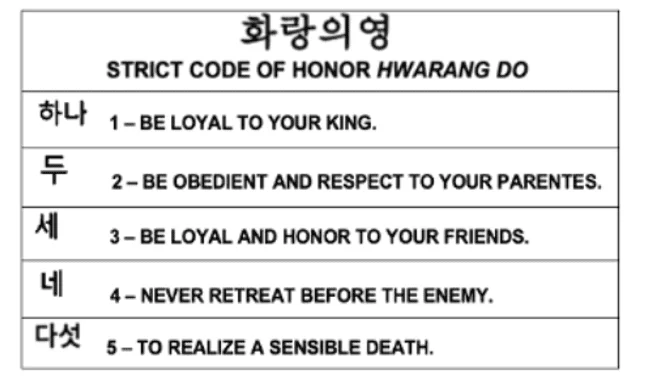
Source: Adapted from Dr. He-Young Kimm, 2005.
Over time, other prescriptions were created as society evolved and became more complex. And Hapkido, being an art of self-defense, requires discipline, order, self-control and hierarchy in the application of its martial and self-defense techniques. Therefore, the code of ethics is mandatory to regulate and keep under control the applicability of its techniques and the conscience of its warriors (GAMA E GAMA, 2019).
3. FINAL CONSIDERATIONS
Amid the limits of the exposed work, the survey of the mentioned literature showed the historical importance of Hapkido and the inclusion of this Korean martial art as one of the preponderant foundations in the psychophysiosocial development of society and its evidence in the development of great nations.
The systematization of its techniques and aspects serve as support as an educational tool for the Physical Education professional in training children, youth and adults, bringing numerous benefits.
It is pointed out that the general objective of the work was fulfilled, having presented the history of this Korean martial art and its founders. The research of the bibliographic references and the various excerpts commented throughout this article allowed us to recognize more precisely that Hapkido is a useful tool to forge character, develop personality and produce disciplinary order.
It is evident that the role of Hapkido martial art is respectable and significant in the process as a balance education for children, youth and adults. Hapkido shows that it can develop high self-esteem by not allowing the young person to cower in the face of the immense task of transforming society.
This article expands the range of knowledge about the influences on the formation of Hapkido and how it can contribute to the development of human potential. The subject of this article is still quite abundant and will demand that other colleagues delve into the subject in greater depth. Researchers must adjust to electronic and digital media in the production of scientific articles addressing Hapkido and other martial arts, questioning their impact on world society.
Finally, we conclude that a technical-scientific evaluation is needed linking Hapkido and martial arts directly to philosophy, psychology, physical education and sports medicine, with practical applications for society and specialized communities across continents.
REFERENCES
AMARAL, Rodrigo. Ensino de Qualidade é Segredo do Sucesso na Coréia do Sul. Disponível em: <https://www.bbc.com/portuguese/noticias/2002/020819_educaro3.shtml>. Acesso em 20. Mar. 2020.
CALDAS JR, P. Hapkido: o caminho da energia coordenada. São Paulo: online 2011.
GAMA, U. A. A.; GAMA, M. M. Hapkido Song Do Kwan – Sistema Filosófico e Marcial. Ed. Vidya, Curitiba, v. 01. 2019.
GAMA, U. A. A.; Hapkido & Taekwondo – O Song Do. Disponível em:< https://www.hapkidocuritiba.com/o-que-e-song-do >. Acesso em 20. Mar. 2020.
GAMA, U. A. A.; Um Breve Perfil Psicanalítico do Bully ou Agressor. Disponível em: < https://www.nucleodoconhecimento.com.br/psicologia/perfil-psicanalitico-do-bully >. Acesso em 12. Fev. 2020.
LIM, Y. K. Hapkido Martial Arts for Kids and Adults. A. Changkwan Co, South Korea, 2017.
MILLER, G. The Hapki Way: The Origins and Usage of Hap and Ki in Hapkido. EUA, Ga Miller Consulting Publishing, 2016.
PELLEGRINI, John. Combat Hapkido: The Martial Art for the Modern Warrior. Florida: Black Belt Books Co, 2009.
KIM, M. Y.; KIM, J. Power Hapkido Essential Techniques. New York: Turtle Publishing & Sam Kwang Printing Ltd., 2005.
KIMM, He-Young. Kuk Sool – History of Hapkido. Baton Rouge: Jackson College Press, 2005.
______________. Chul Hak – Philosophy of Kuk Sool. Baton Rouge: Jackson College Press, 2005.
______________. Young-U, Hyul Bub and Lee Ron. Baton Rouge, Louisiana, Jackson College Press, 2005.
SHEYA, J. Traditional Hapkido. Florida, U.S. Black Belt Mag. Publishing, 2000.
SHAW, Scott. Hapkido: Korean Art of Self-Defense – Martial Art. Florida, Turtle Publishing, 2011.
TEDESCHI, Marc. Hapkido: an introduction to the art of self-defense. Boston: Weatherhill, London, 2006.
APPENDIX – FOOTNOTE REFERENCE
2. It is pronounced Hap (as in English Help), with an aspirated “H”; Ki-Dô (with circumflex accent only in pronunciation, not in writing).
3. Boddhidharma (pronounced “bodhidarma”), Indian monk, 28th. Patriarch of Buddhism, founder of Zen or Chinese Ch’An. The name Boddhidharma is composed of two words “Boddhi” ( ) meaning “enlightened”, and “Dharma” ( ) meaning “law or duty”.
4. Yon-bom also known as “nunchaku”, an oriental martial weapon consisting of two small sticks connected by a rope or chain
5. Other weapons that were developed by the Korean people, such as: kung-sa (spear and archery), Kumdô (similar to Kendo), Kisa-Bub (horseback riding), Dan Kum Sool (throwing knives), takyuk sull (techniques fighting and counterattacks), Soo Young Bub (swimming and diving), among others.
6. Pronounce “kombô”.
7. Pronounce “subakdô” and “tekion”.
[1] Honorary Doctor of Physical Education from Cambridge International University; Master in Neuropsychoanalysis; MBA in Sports Administration; Specialist in Psychoanalysis in the area of health and social welfare; Specialist in Developmental Psychology; Degree in Philosophy; Physical Education Professional CREF 14.394-G/PR; Bachelor in theology; Journalist MTB 10645/DF.
Sent: June, 2021.
Approved: September, 2021.

